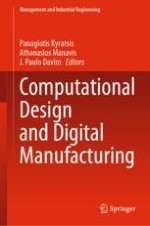2023 | OriginalPaper | Chapter
Topology Optimization Utilizing Density-Based Approach for Additive Manufactured Components: A Case Study of an Automotive Brake Caliper
Authors : Nikolaos Kladovasilakis, Georgios Kosmidis, Panagiotis Kyratsis, Dimitrios Tzetzis
Published in: Computational Design and Digital Manufacturing
Publisher: Springer International Publishing
Activate our intelligent search to find suitable subject content or patents.
Select sections of text to find matching patents with Artificial Intelligence. powered by
Select sections of text to find additional relevant content using AI-assisted search. powered by
